|
 Humidicutis mavis Humidicutis mavis
SynonymsHygrocybe mavis
Hygrophorus mavis
Humidicutis pura
Hygrophorus purus
BiostatusPresent in region - Indigenous. Non endemic
Images (click to enlarge)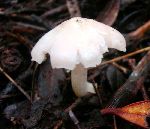
Caption: from Adams Island, Auckland Islands, 2006
Owner: Peter Johnston | 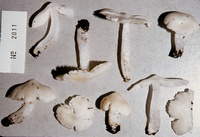
Caption: ZT2011
Owner: E. Horak: © Creative Commons Attribution-Noncommercial 3.0 New Zealand | 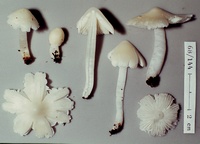
Caption: ZT68-144
Owner: E. Horak: © Creative Commons Attribution-Noncommercial 3.0 New Zealand | 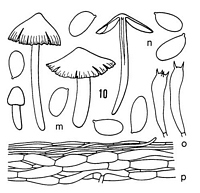
Caption: Hygrocybe mavis (Stev.): m. carpophores. - n. spores. - o. basidia. - p. cuticle (Herb. HK. ZT 68/144) | 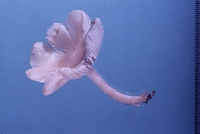
Owner: Herb. PDD | 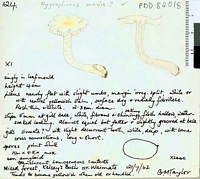
Caption: Watercolour
Owner: G.M. Taylor | 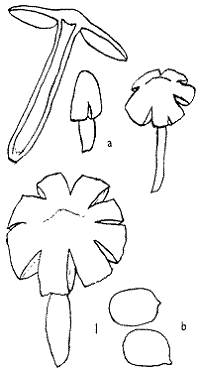
Caption: Hygrophorus mavis, X 1;
lb, spores, X l000 | 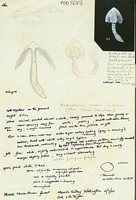
Caption: Watercolour
Owner: G.M. Taylor | |
Article: Horak, E. (1971). A contribution towards the revision of the Agaricales (Fungi) from New Zealand. New Zealand Journal of Botany 9(3): 403-462 (http://www.rsnz.org/publish/abstracts.php).
Notes: Hygrophorus mavis Stevenson (28 D) = Hygrocybe mavis (Stevenson) comb.
nov. (Basionym: H. mavis Stevenson, Kew Bull. 16: 377, 1962)
Article: Stevenson, G. (1963) [1962]. The Agaricales of New Zealand: IV. Kew Bulletin 16(3): 373–384.
Description: Pileus 2-4 cm, diam,, snow-white becoming slightly creamy at centre, plano-convex
with a broad umbo, silky fibrillose, splitting radially; flesh pure white, fragile.
Gills free or slightly adnexed, moderately distant, rather thick, surface wrinkled
white. Stipe 2.5-4.5 X 0.3-0.6 cm., white, silky, smooth, hollow, fragile, more
or less equal. Spores 7-8 X 5 µm., oblong, hyaline, smooth. Basidia 4.0 X 6-8
µm., four-spored. Noticeable fungus smell.
Habitat: habitat: under forest and scrub, Egmont, 17.6.1948, Stevenson-,
Levin, 18.6.1959, Stevenson, Lowry Bay. 6.7.1949, Stevenson; Levin, 22.6.1958,
Stevenson, Rotoiti, 16.5.1956 E- Kidson, Kapiti, 22.6.1958, Mavis Davidson.
Article: Horak, E. (1973). Fungi Agaricini Novazelandiae I-V. Beihefte zur Nova Hedwigia 43: 200 p.
Description: Pileus 10-40 mm diam., conical when young later becoming plano-convex, aged specimens radially splitting, ivory or whitish, silky fibrillose, slightly striated towards the margin of the pileus, dry. Lamellae free to adnexed, white, distant, gill edge concolorous, even. Stipe 20-60 x 3-8 mm, cylindric, equal or attenuated at the base, concolorous with pileus, silky, dry, hollow, fragile, often twisted. Context white. Taste and odor not distinctive. Chemical reactions on pileus: KOH, HCl and NH3 - negative.
Spores 7-10 x 4.5-5 µm, ellipsoid, smooth, inamyloid. Basidia 33-42 x 7-8 µm, 4-spored. Cystidia absent. Cuticle a cutis of repent, cylindric, hyaline, not gelatinized hyphae (2-5 µm diam.). Clamp connections lacking.
Habitat: In soil in Dacrydium-Podocarpus forests, rarely under Nothofagus spp. New Zealand.
Notes: H. mavis (Stev.) has much the stature and the colours of H. purus Peck from North America but the dry pileus and stipe as well and the absence of clamp connections are clearly distinguishing characters.
|